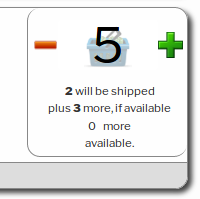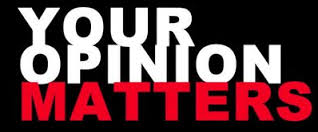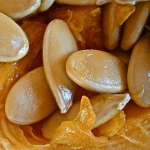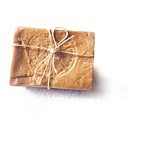The Nebraska Food Coop looks forward to serving our producers and customers again in 2024.
Thank you for your support!
NFC Team

Nebraska's on-line, year-round farmers' market and local food distribution service
The Nebraska Food Coop looks forward to serving our producers and customers again in 2024.
Thank you for your support!
NFC Team
The June 2022 Order cycle is scheduled to close June 26th at 8:00 PM.
Please help us reach our goal for this cycle. Share Nebraska Food Coop with your family and friends.
Jump on over to the Shopping Page
The April 2022 Order cycle is scheduled to close April 3rd at 8:00 PM.
Thank you for the orders received to date. Please help us reach our goal for this cycle. Share Nebraska Food Coop with your family and friends.
Jump on over to the Shopping Page
Our first order window for 2022 will close 8:00 PM February 6th.
Thank you to all our great members who have ordered product to help us reach our goal.
Welcome to our newest producer Hastreiter Farms, a small local farm in the Madison Nebraska area.
For a complete listing of all our great producers currently listing products for sale visit:
Nebraska Food Coop Members,
The Nebraska Food Coop will hold our 2021 Annual Meeting December 1, 7:00 PM utilizing an On-Line format.
If you are a member in good standing, the On-Line Meeting information for Dec. 1 at 7:00 PM meeting may be obtained by directly emailing: gm@nebraskafood.org. Please send an email to gm@nebraskafood.org and request the meeting information to join.
Agenda Items:
1. Introduction Nebraska Food Coop Board
2. Members who are attending say hello and tell us one good thing about the coop and one you would like to change.
3. Discuss the Website design and function. Any suggestions
4. 2021 Supplemental Cooperative Business Development Mini-Grant Program for $2,500 through Nebraska Cooperative Development Center for planning and marketing.
5. Findings from contacting Grow Nebraska. Membership can vote if NFC should join Grow Nebraska as a member?
6. Give a brief summary of how we run the transportation. Explain the decision to run the order when it reaches $5,000.00.
7. Where do we go from here? What items can members help out with.
8. Any other new business and adjourn
The Food Coop Member Order Window will close November 14th, at 8:00 PM. Even if we have not reached our order goal of $5000 in sales, we will close on November 14th. This will allow our producers to get items to our customers before Thanksgiving Day!
Since it is taking a couple months for our orders to reach our goal, please plan to purchase items for Christmas. So order your food items for Thanksgiving Day and Christmas NOW to be delivered the week of November 14th.
Thank You
Since we were far from reaching our order window goal of $5000, the current order window has been extended. The current order window is now scheduled to close November 7th, Sunday, at 8 PM. Please help us reach our goal so we can close this order cycle and get product out in mid-November.
Thank You
Thank you to all our great members for making excellent progress towards reaching the August 15th order window goal of $5,000 in orders. We have nearly reached our goal!
The August order window will close on August 15th at 8 PM.
Please verify that your items are “CHECKED OUT” prior to 8 PM on Sunday August 15th.
Thank You
The August 2021 Order Window will Tentatively close on Sunday August 15th (8 PM).
Help us reach our goal of $5,000 sales of Local Nebraska Food items listed by our Food Coop Producers!
If for some reason we do not reach our goal by August 15th we will let our customers know through our email list and right here in our “Recent Update” section of the website.
We will confirm the closing date about 2 weeks ahead of time so customers, site coordinators and producers are sure of our delivery schedule. This will give our vegetable producers time to list products based on a solid closing date.
Nebraska Food Coop Members, Producers and Friends:
The current NFC Board would like to THANK YOU for your past and continued support of “Nebraska’s Online Farmers’ Market.” We are anxious to start serving you again and recently opened our first 2021 cycle to close on Sunday March 14th, with deliveries that week.
At this time, as the coronavirus continues to be part of all our lives. Having a secure supply of local foods is more important than ever. Supporting our local farmer helps keep our food supply secure and available.
With the recent resignation of our past President Roy, due to Caryl’s health care needs, we would like to thank Roy and Caryl for their unwavering support of NFC over the past many years. You may want to review Roy’s recent resignation email for additional information.
During this transition in NFC coordination, we would like our Nebraska food community to know the current Board is committed to the original Mission of NFC:
To foster a local food community and promote a culture of stewardship by cultivating farmer-consumer relationships, promoting the enjoyment of healthful food, increasing food security through diversity, and enhancing overall rural sustainability.
As we open our first cycle of 2021, if you have any questions or would be interested in finding out how you could help move NFC forward in this new year, please contact the Board.
Liz Sarno, President
Johnathan Hladik, Secretary
Doug Garrison, Treasure
(email: gm@nebraskafood.org)
Greetings NFC members,
In a continuing effort to adjust to the changing needs of the Nebraska Food Cooperative, we have pushed forward with installing the latest release of “Open Food Source” software. You may notice some minor disruptions as we ensure the system is functioning correctly. NFC is the first organization to benefit from this significant development effort and we should expect a few challenges.
 Customers can now order more products than are actually available. This will give producers a chance to fill larger orders as additional product becomes available. Example: the image at right shows an order of five items where only two are known to be available. The customer will only be charged for what is shipped and there is no guarantee the producer will fill the full request.
Customers can now order more products than are actually available. This will give producers a chance to fill larger orders as additional product becomes available. Example: the image at right shows an order of five items where only two are known to be available. The customer will only be charged for what is shipped and there is no guarantee the producer will fill the full request.This software was released as soon as possible and there may still be a few kinks to work out. We ask that customers and producers remain vigilant for anything that seems incorrect and alert webmaster@nebraskafood.org if you encounter anything that seems wrong.
For those who like the technical details:
by Tim Rinne
November 29, 2014
Lincoln Journal Star

It’s been a year of bad news for the security of our food supply.
In March, the United Nations Intergovernmental Panel on Climate Change reported that “Throughout the 21st century, climate-change impacts are projected to further erode food security — particularly in urban areas and emerging hot spots of hunger.” All aspects of food security, the report stated, are potentially affected by climate change, “including food access, utilization and price stability.”
Then in May, the Chicago Council on Global Affairs’ Agricultural Development Initiative (co-chaired by former Nebraska Congressman Doug Bereuter) issued a report warning that “Climate change will bring hotter temperatures, changing rainfall patterns and more frequent natural disasters. Farmers everywhere will be affected.” If these challenges are not addressed, “consumers will need to be prepared for higher food prices and potential food shortages.”
A month later, two of Bereuter’s Republican colleagues, Henry Paulson (George W. Bush’s Treasury Secretary) and George Shultz (Ronald Reagan’s Secretary of State), released a risk assessment on the perils climate change poses to agriculture: “Our research shows that under the ‘business as usual’ scenario and assuming no significant adaptation by farmers … the Midwest region as a whole faces likely yield declines of up to 19 percent by midcentury and 63 percent by the end of the century.”
The disconcerting report was followed in September by the release of the University of Nebraska-Lincoln’s climate assessment for Nebraska, which projected that by midcentury (2041-2070) typical summer temperatures will be “equivalent to those experienced during the 2012 drought and heat wave … which was the driest and hottest year for the state based on the climatological record going back to 1895.”
And finally, building on its 2010 designation of climate change as a “national security threat,” the Department of Defense in October cautioned that “Rising global temperatures, changing precipitation patterns, climbing sea levels, and more extreme weather events will intensify the challenges of global instability, hunger, poverty, and conflict. They will likely lead to food and water shortages, pandemic disease, disputes over refugees and resources, and destruction by natural disasters in regions across the globe.”
In short, our global food supply is at risk. And that’s a problem, because we can no longer feed ourselves locally.
More than 60 years ago, even a renowned farm state like Nebraska gave up growing food for our own diet. We’re still an agricultural titan. But with the wholesale shift to commodity agriculture, we’re growing feed for animals and corn for ethanol — not food for our tables.
As much as anyone living in New York City and Los Angeles, we depend on the global food system to stock our pantries and dish up our meals. Like the rest of America, we’re getting half of our produce — including 70 percent of the lettuce — from the California Central Valley (which is, incidentally, mired in a record-breaking 500-year drought). Even more telling, $4 billion of the $4.4 billion we Nebraskans annually spend on food is leaving the state. We’re not buying food that’s from here. Instead, we’re blithely counting on some faceless, anonymous source to supply all our meals and snacks.
But that’s not going to work anymore. Unless we want to risk going hungry, we’re going to need to start quickly rebuilding our food system. And just as eating is a “local” act (stuffing our mouths is about as local as you can get), we need a food supply that’s locally based as well.
As consumers, we need to be supporting our local farmers and ranchers and building the market for locally produced food. But those of us in the city can’t get by just being eaters any more, either. We’ve got to start pulling our own weight in the food system and begin producing what we can.
While we’ll always be dependent on the countryside for our grains and dairy and meat, what we can produce in the city we can produce better than anyone else. We can grow the perishable items (particularly the lettuce greens) that are the hardest to keep on the grocery store shelf. And because they’re grown and harvested right where we live, they’re fresher and more nutritious.
All over town, from the grass front lawn to the sidewalk space in the city right-of-way, there’s room for beds of lettuce and spinach, carrots and peppers, onions, tomatoes and potatoes. And with the onset of climate change and the threat of food shortages, it’s none too soon to be trying our hands at a little gardening and learning something about our food.
It’s what we as city dwellers can do to help ensure that in the anxious days to come we’ll know where our next meal is coming from.
Tim Rinne, TedX Lincoln presenter, shares the evolution of Lincoln’s Hawley’s Hamlet at the November 2014 TedX Lincoln event.
Starting with the December 2014 cycle, NFC is SHORTENING its ORDER cycle….
from:
Sunday morning through the following Sunday 6 PM,
to:
Wednesday morning through Sunday, 3 PM
Effective Order Cycle: Wednesday, December 10 – Sunday, December 14, 3 PM
Closing time for the cycle has been moved up to 3 pm (central time) to give our producers more time to fill your order.
So remember, whatever is in your basket at 3:00 Sunday is considered a purchase.
A calendar with the new 2015 cycle dates will be published in the December newsletter and soon on NFC’s home page.
Customer pick-ups the following week will remain the same.
Producer pick-ups may change slightly to accommodate our central route. More producer information will be communicated via the regular Producer Notes email from the general manager.
July 24th will be the LAST delivery cycle for the OMA1 (Dundee) site at its current site, as Yvonne and her family are moving out of state.
If you would like to volunteer, our general manager will be happy to get you started as a site coordinator. Just notify Caryl by email.
 We are seeking opinions about how NFC members would like to see their Forum List utilized.
We are seeking opinions about how NFC members would like to see their Forum List utilized.
The purpose of the Forum is to share relevant NFC news, discussions, and as a means for increasing exposure and participation. However, we also realize that many people like to minimize their e-mail volume.
Currently, all new members are automatically subscribed to the NFC Forum (ie, an Opt-Out forum: members may OPT-OUT of the list at any time).
So, we would like to hear from you for a short TWO QUESTION survey: 1) Do you prefer an: OPT-IN or OPT-OUT forum, and 2) what topics you would like to see on your forum. Help us improve the forum by sharing your opinion on this SURVEY MONKEY poll by the end of June.
Thank you for your time, interest, and support in improving your NFC experience.
 Two weeks ago, on April 17, the open-source seed initiative (OSSI) was launched from the University of Wisconsin, Madison, partly in response to industry giants who dominate the seed industry. Monsanto, Syngenta, and DuPont currently control about half of all commercial seed sales and are rumored to have tried patenting heirloom seeds in addition to the proprietary seeds they have developed for themselves.
Two weeks ago, on April 17, the open-source seed initiative (OSSI) was launched from the University of Wisconsin, Madison, partly in response to industry giants who dominate the seed industry. Monsanto, Syngenta, and DuPont currently control about half of all commercial seed sales and are rumored to have tried patenting heirloom seeds in addition to the proprietary seeds they have developed for themselves.
Contracts from these companies often stipulate that farmers are forbidden from replanting seeds, forcing them to purchase new seeds every season. In response to this situation, OSSI is taking steps to place seeds explicitly into the public domain for use by anyone. The open-source seeds released by OSSI, include varieties of kale, squash, quinoa, zucchini, cress, broccoli, and carrots. They are accompanied by the following pledge:
This Open Source Seed pledge is intended to ensure your freedom to use the seed contained herein in any way you choose, and to make sure those freedoms are enjoyed by all subsequent users. By opening this packet, you pledge that you will not restrict others’ use of these seeds and their derivatives by patents, licenses, or any other means. You pledge that if you transfer these seeds or their derivatives they will also be accompanied by this pledge.
The principle behind the open-source seed initiative follows from the open-source software movement, which is aimed at producing software that can be used and re-used without being taken over by the proprietary rights of any company.
If you have ever bothered to read the end user licensing agreement (EULA) for software installed on your computer, it usually includes many pages of legal jargon detailing, among other things, that you are prohibited from looking at the code to discover how it works. This restriction on discovery is what makes the software proprietary or closed-source. The source-code (instructions that make the program work) is legally protected from any outside scrutiny.
In 1983, in response to increasing prevalence of closed-source software, the open-source software movement, now enjoined by many programmers around the world, began to produce programs, often licensed under the Gnu Public License (GPL), which ensure they will remain free for anyone to examine along with all future versions of those programs. GPL software can never be restricted by anyone, for any reason, ever.
Examples of closed-source software, restricted from public scrutiny, include operating systems like Windows and Apple, as well as programs like Internet Explorer, Safari, Outlook and Outlook Express, Microsoft Office, and Adobe products. However, open-source software is also widely used, including such operating systems as Linux and BSD, and programs like Firefox, Thunderbird, Libre Office, and many others (including all the sofware that runs the NFC website).
The recent Heartbleed bug probably would not have been discovered if it had not been an open-source program that could be reviewed for potential problems.
Even though open-source seeds are not strictly publishing the code of their seeds (i.e. the seed DNA), the initiative is borrowing from the open-source software movement to ensure the code remains open and available for use by anyone and that it will never be restricted or patented.
Making a pledge for open-sourced seeds is a great advancement toward food security.
If you a woman who is interested in getting started in gardening, farming, and/or ranching, then this workshop series is perfect for you!
The Center for Rural Affairs is offering Beginning Women Farmer learning opportunities! Each workshop is only $5, and it includes lunch.
Please register, in advance, with Virginia Meyer:
Email: virginiam@cfra.org
Phone: (402) 992-5134)
Farm Dreams
April 12, 2014; 10:30 am – 2:30 pm
Syracuse Public Library
496 6th St, Syracuse, NE
The Farm Dreams Workshop is an entry level, four-hour workshop designed to help people who are seeking practical, common sense information on whether farming or ranching is the next step for them. Participants will be able to examine their resources, skills, and motivations for farming/ranching, and develop a plan for moving forward toward their farming goals.
Farm Business Financing
May 10, 2014; 10:30 am – 2:30 pm
Lewis and Clark Center
100 Valmont Drive
Nebraska City, NE
The Farm Business Financing Workshop is an intensive business planning and farm financing course designed to help women farmers and ranchers design a business plan and access financing for their agricultural operations. A well-organized and thoughtful business plan is a key step for beginning farmers and ranchers who want to finance their operations.
Selling at Farmers Markets
June 7, 2014; 11:30 am – 2:30 pm
Breadeux Pizza
1425 Silver Street
Ashland, NE
We have tips and tricks to help you rock the Farmers’ Market. This workshop will focus on making the most of selling at farmers’ markets including location, building a customer base, product, presentation, price, and the art of selling. This workshop is perfect for those getting started or those thinking about selling at farmers’ market.
Selling through a CSA
June 21, 2014; 11:30 am – 3:30 pm
Webermeier Public Library
617 2nd Street
Milford, NE
Learn more about selling through a Community Supported Agriculture or CSA system. Advantages of selling through CSA include:
Attend this workshop to learn more about selling through a CSA.
The REAL story behind commercial soap? You’ll be surprised, or maybe you won’t be! Read on….
The modern industrial process has drastically changed what we call “soap”. Modern manufacturing methods are causing concern for our environment and waterways.
The industrial manufacturing process is more focused on quantity, production levels and returns on investment rather than with customer satisfaction, skin care, or environmental issues. Raw materials are chosen for their cost versus skin care properties or environmental issues.
As a matter of fact, most commercial soaps these days are made from food industry waste, particularly low-value products of the meat industry. To keep up with quantities, a total automated process is required which manipulates base ingredients by adding synthetic additives that have nothing to do with real soap or skin care.
They then manipulate ph, hardness, color, and lather to extend the shelf life to unnatural time lines. Glycerine is removed and sold as a separate commodity. After vacuum drying, cooling, and solidifying, the “soap” is crushed and milled to create a moldable paste, which is then treated with synthetic color, perfumes, sudsing, sequestering, and chelating agents.
Finally with the addition of synthetic lubricants, the soap mass is extruded into bars and pressed into the final shape and are marketed as “beauty bars”. Is it any wonder that doctors and skin care specialists often recommend not to use commercial soap if you have skin problems?

Handmade soap is a natural and refreshing alternative! For those who are environmentally conscious, the possibility of choosing natural and locally available products is an extra bonus to the wonderful skin care properties of natural soap.
Each batch of soap starts from scratch and incorporates the highest quality plant-based ingredients. Base oils could be individual or a combination of olive oil and coconut oil with some additions of other oils, such as rosehip, chosen for their skin care benefits.
Many handmade soap batches incorporate herbs and flowers , which are chosen for their skin care properties and are free of synthetics, perfumes, fragrance oils, and dyes.
Each batch of handmade soap is preserved naturally and scented with pure essential oils that have additional skin care benefits, and individually tested to ensure the right ph level for skin. All of the naturally occurring glycerin produced during the soap making process is retained in every bar.
So the next time you walk in the store to buy commercial soap, consider the handmade alternative that has been crafted with loving attention to details.
Excerpt reprinted with permission from Cloverleaf Cooperative